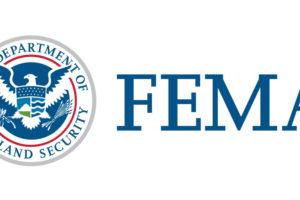Record floods threaten nuclear power site in Bangladesh
Bangladesh has experienced intense flooding covering at least a quarter of the country as it goes through monsoon season. NASA has released a map showing the extent of this year’s flooding from June to the end of July along the Jamuna River, where high danger levels have been reached or surpassed. Reported at the end of July, more than 4.7 million people have been affected and more than half of Bangladesh’s districts are flooded.
One of the areas affected is the Pabna district, home to the construction site of Bangladesh’s two nuclear power reactors at the Rooppur Nuclear Power Plant.
In 2017, Bangladesh, with help from Russia, began building a nuclear power plant near the Padma River. Upon its planned completion in 2024, the two-unit nuclear power plant is intended to help meet growing energy demands and improve grid reliability. A 2011 agreement was made with Rosatom, a Russian State Nuclear Energy Corporation, to facilitate the build of two nuclear reactors and establish a legal basis for nuclear cooperation between the two countries. Through this agreement, Rosatom is charged with building and operating all aspects of the nuclear reactor until the first completed year of operation. The deal included a $500 million loan from Russia to finance engineers and project development, the management of spent nuclear fuel, and nuclear technology exchanges between the two countries.
As Russia pushes forward with construction of the Rooppur Nuclear Power Plant, Bangladesh faces major climate change risks from record heavy precipitation, sea-level rise, and climate-induced migration. After two months of rain, the Padma River beside the Rooppur Nuclear Power Plant has almost doubled in size. Torrential rains and subsequent river erosion have flooded crops, villages, and critical infrastructure. The districts surrounding the nuclear plant are among some of the most affected in Bangladesh this season.
The site for the plant was selected almost 60 years ago in 1963, during a time when climate change did not factor into such decisions. Despite rising threats to the site from climate change, as well as dire projections for the future, plant construction began anyway in 2017. While a passive core flooding system was built to help avoid a catastrophe if an accident affects the reactor cores, increased climate variability and intensification pose a clear threat to the plant. Scientists tracking the intensity of extreme weather events in Bangladesh have stated that river flooding has become more severe and frequent with this monsoon season, possibly the longest lasting since 1988. Resting only 5,000 feet from the Padma river and below the Ganges delta, the plant is at constant risk.
Bangladesh will have to adapt to its changing climate and ensure that the utmost level of protection and precaution is taken to maintain Rooppur Nuclear Power Plant and the surrounding population’s safety. As climate change intensifies, the threat of severe damage to the nuclear power plant increases that could devastate millions.
Source - Center for Climate & Security


